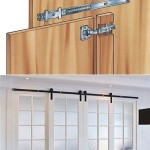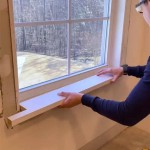36 Inch Interior Door Rough Opening Size Chart In Inches
When planning a home renovation, new construction, or even a simple door replacement, understanding the precise dimensions of a rough opening is paramount. For a 36-inch interior door, accuracy in the rough opening size directly impacts the ease of installation, the functionality of the door, and the overall aesthetic outcome. A properly sized rough opening ensures that the door fits squarely within the frame, operates smoothly, and prevents issues such as drafts or binding. This article provides a comprehensive guide to understanding the rough opening dimensions required for a 36-inch interior door, explained with precise measurements and considerations for various scenarios.
The rough opening is the framed space in a wall where a door unit is to be installed. It is intentionally larger than the nominal door size to accommodate the door frame, shims, and any necessary adjustments during installation. Understanding the correct rough opening dimensions is essential for both DIY enthusiasts and professional contractors to ensure a successful door installation.
Failing to accurately measure and prepare the rough opening can lead to significant difficulties, including the need for costly modifications to the framing or the door itself. A rough opening that is too small will require widening, which can be a time-consuming and structurally challenging task. Conversely, a rough opening that is too large may necessitate excessive shimming, potentially compromising the stability and aesthetic appearance of the door.
Standard Rough Opening Dimensions for a 36-Inch Interior Door
The nominal size of a door refers to its stated width and height. For a 36-inch interior door, the actual dimensions of the door slab are typically very close to 36 inches in width. However, the rough opening needs to be larger to accommodate the door frame, which includes the jambs (vertical sides) and the head jamb (top piece), as well as space for shimming to ensure the door hangs plumb and square.
The standard rough opening for a 36-inch interior door is typically 38 inches wide and 82 inches high. This allows for a standard door frame with a thickness of approximately 3/4 inch on each side plus some extra space for shimming. The rationale behind these dimensions is to provide sufficient room for maneuvering the door unit into place and making necessary adjustments during installation. The height of 82 inches accounts for the standard door height of 80 inches plus the frame and space for adjustments. It's important to note that while 80 inches is standard for interior doors, variations exist, particularly in older homes, so accurate measurement of existing openings is critical.
To reiterate, consider these key dimensions:
- Nominal Door Width: 36 inches
- Standard Rough Opening Width: 38 inches
- Nominal Door Height: 80 inches
- Standard Rough Opening Height: 82 inches
These dimensions are general guidelines, and it is always advisable to confirm the specific requirements of the door frame being used, as different manufacturers may have slightly different specifications. The extra 2 inches in width and height provide the wiggle room needed for a proper fit. This space ensures the door doesn't bind and allows for accurate alignment adjustments during the installation process.
Factors Influencing Rough Opening Size
While the standard rough opening dimensions provide a solid starting point, several factors can necessitate adjustments. Variations in framing materials, the type of door frame, and the presence of flooring can all influence the ideal rough opening size. A thorough assessment of these factors is essential to avoid installation problems.
Frame Material: Door frames are commonly constructed from wood, steel, or composite materials. Wood frames, while generally consistent, can sometimes vary slightly in thickness due to natural variations in the wood. Steel frames, on the other hand, are typically more uniform in dimensions. The chosen frame material will influence the overall thickness of the frame, which directly affects the required rough opening size. If using a particularly thick or non-standard frame material, adjustments to the rough opening might be required.
Door Frame Type: Different types of door frames, such as pre-hung doors and slab doors, have distinct installation requirements. A pre-hung door comes already installed in its frame, simplifying the installation process. However, this also means that the unit's overall dimensions are fixed. A slab door, on the other hand, requires a separate frame to be constructed or installed. In this case, the rough opening must be sized to accommodate both the door slab and the separately installed frame.
Flooring: The type and thickness of flooring can also impact the required height of the rough opening. If new flooring is being installed, it is crucial to factor in its thickness when determining the final rough opening height. Failing to account for flooring thickness can result in the door dragging on the floor or an unsightly gap between the door and the floor. In situations where flooring is already installed, the existing floor height must be considered. If the existing flooring is thick enough to affect door clearance, modifications to the door height or the rough opening may be necessary.
Shimming: Shimming is the process of using thin pieces of wood or composite material to fill gaps between the door frame and the rough opening. Shimming is essential for ensuring that the door is plumb, level, and square within the opening. While the rough opening should not be excessively large, it is generally preferable to have a slightly larger opening that can be adjusted with shims rather than an opening that is too small. Adequate space for shimming allows for precise adjustments and prevents the door from binding or becoming misaligned.
Existing Conditions: When replacing an existing door, it is essential to carefully measure the existing rough opening. In older homes, framing dimensions may not be perfectly consistent, and the existing opening may not conform to standard sizes. Before ordering a new door, accurately measure the width, height, and depth of the existing rough opening and make any necessary adjustments to ensure a proper fit. If the existing opening is significantly out of square or plumb, it may be necessary to correct the framing before installing the new door.
Measuring the Rough Opening Accurately
Accurate measurement is crucial for ensuring a proper fit. Use a reliable measuring tape and take multiple measurements at different points to account for any variations in the framing. Follow these steps to measure the rough opening accurately:
Width Measurement: Measure the width of the rough opening at the top, middle, and bottom. Use the narrowest measurement as the controlling dimension. This ensures that the door frame will fit even if the opening is slightly narrower at one point than another.
Height Measurement: Measure the height of the rough opening on the left and right sides. Again, use the shortest measurement as the controlling dimension. Be sure to measure from the subfloor to the header (the horizontal beam above the opening).
Depth Measurement: Measure the depth of the wall, also known as the jamb depth. This measurement is critical for selecting the correct door frame width. The door frame should be wide enough to cover the entire wall thickness. If the frame is too narrow, it will not sit flush with the wall surface. If the frame is too wide, it will require trimming. Standard interior walls are typically 4 1/2 inches thick, but variations can occur, particularly in older homes or in walls with non-standard framing.
Squareness: Use a carpenter's square to check the squareness of the rough opening. Place the square in each corner to verify that the angles are 90 degrees. An out-of-square opening can cause the door to bind or be difficult to close properly. If the opening is not square, adjustments to the framing may be necessary.
Plumbness: Use a level to check the plumbness of the side jambs. Hold the level against the left and right sides of the rough opening to ensure that they are vertical. If the jambs are not plumb, the door may swing open or closed on its own, or it may be difficult to latch properly. Shimming can be used to correct minor plumbness issues, but significant plumbness problems may require adjustments to the framing.
By carefully measuring the width, height, depth, squareness, and plumbness of the rough opening, one can ensure that the door frame will fit properly and that the door will operate smoothly. Always double-check all measurements before ordering a new door or beginning the installation process.
Remember that these measurements should be taken after the wall is completely framed and any shimming or adjustments to the framing have been made. Taking early measurements can lead to inaccuracies, especially if the wall framing is not yet complete or if the wall is still settling.

Door Rough Opening Sizes And Charts Ez Hang

Doors Measuring Rough Openings Builders Surplus

Rough Openings For 36 Inch Door Dimensions Installation

What Size Door Do I Need Guide Charts

Door Rough Opening Sizes And Charts Guide For Interior Exterior Doors Wiki

How To Measure Hollow Metal Door Rough Openings Learn More

How To Measure A Rough Opening For Doors Complete Guide Pros

How To Measure For A Storm Or Screen Door Larson Doors

Rough Opening For Doors 24 28 30 32 36 Sizes Charts

How To Measure A Rough Opening For Doors Complete Guide Pros
Related Posts








